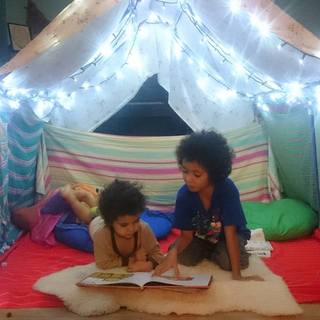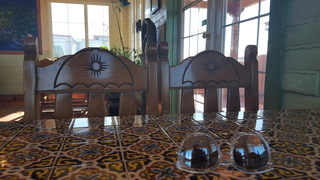
Whitney DiFalco arranged those buttons within a circle, and photographed the result. Each button was created as utiltarian art, by other people, other places, other times. The photo is here for you to see. The buttons are probably back in whatever tin or box they were in before.
After some recent snow and rain, water ran off the roof into a plastic half barrel. The top froze, about two inches thick. Leaves had fallen on one side, and the ice locked them in.

My husband, Keith, took it out and set it upright so the light could shine through. His artistic decision was what would be "the base," so the mostly-embedded leaves hung down nicely. He didn't tell me about it; I happened to notice, and took a photo from my car.
The ice is gone, the leaves are on the ground with many others, and someday the photo will be lost.
"Art" isn't just in the arrangements or the photos. I think art arises with someone's appreciation of the shapes, colors, textures, and light.
The Spirituality page has a title made of a photo of temporary patterns.
Someday that page will be gone.
photos by Whitney DiFalco and Sandra Dodd
__












